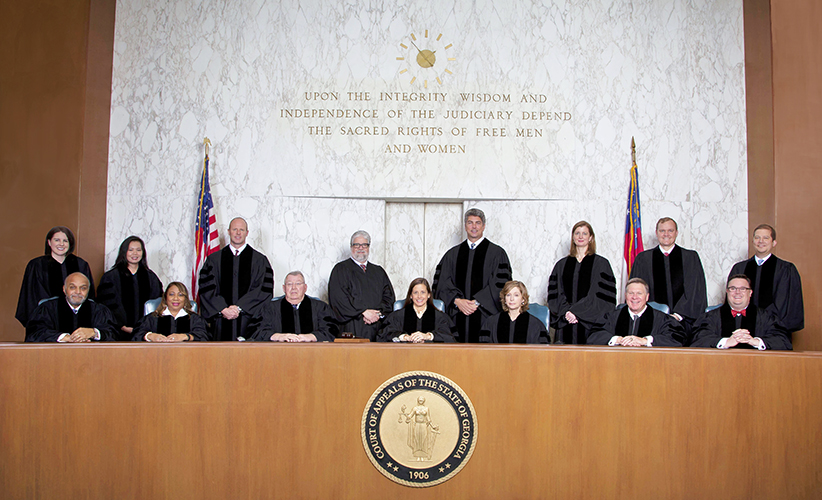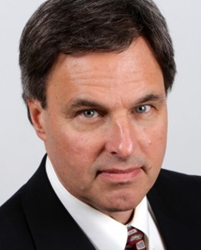
Ga. woman wins $40K in State Farm bad-faith auto body ‘prevailing prices’ dispute
By onBusiness Practices | Education | Insurance | Legal | Repair Operations
Collision repairers and policyholders might have an easier time collecting and being made whole for necessary repair procedures following court actions this year against State Farm in a bad-faith contract case.
The Georgia Supreme Court declined this fall to hear State Farm’s appeal of a 2014 verdict and 2016 appellate court affirmation against the insurer for its handling of a 2011 vandalism claim. Plaintiff Japonica Roberts’ attorney Eugene Brooks of Brooks Law Office announced the victory Wednesday.
Roberts, a State Farm policyholder, was awarded tens of thousands of dollars by a State Court of Chatham County jury in short-pay, penalty and attorney costs after the carrier refused to cover $4,297 in repair costs above its initial estimate and $1,125 in rental car costs.The repair costs include not-included procedures, including work Brooks said was necessary under the paint manufacturer’s warranty, parts costs and a towing fee.
Besides $5,508 worth of such breach of contract amounts, the jury awarded Roberts the maximum insurance bad-faith penalty of $5,000 and more than $30,000 in attorney’s fees, according to Brooks. The Supreme Court refusing to hear State Farm’s appeal means Roberts can finally collect the judgement, Brooks said.
“The evidence showed that State Farm applied a different method of determining its payment obligations than those described in the policy,” Brooks said in a statement Thursday. “State Farm applied an internal method based on its determination of what was a ‘competitive’ rate based on a survey that was not described in the policy. Under Georgia law, any ambiguity in the policy written by State Farm had to be interpreted in favor of our client, the policy holder.”
The appellate court didn’t issue an opinion besides that it affirmed the lower-court ruling, and the jury verdict doesn’t really summarize the case either aside to say it agreed with Roberts and awarded her the money she sought. But Brooks’ account of the case in his appellate court brief, while obviously written in the light most favorable to his client, is extensively annotated from the transcript and apparently was viewed as a valid enough summary by the higher courts. (After all, his client won.)
As such, it’s worth reading. Some of the insurance industry behavior described in the case might sound familiar to other collision repairers and customers in Georgia and elsewhere. Brooks speaks of an outdated labor rate survey with questionable methodology, an arbitrary refusal to pay for certain procedures, unreasonable delays, and attempts to unilaterally apply contractually deflated DRP practices on collision repairer shops with no such business relationships.
The case also shows how such behavior might not stand up to scrutiny from a party outside of the insurance and collision repair industry. This suggests that legal action over insurer stonewalling, not-included procedures and even the basis of the controversial State Farm labor rate survey could pay off for shops or customers.
However, such an outcome could come slowly — Roberts sued in 2012 — and expensively for the plaintiff and/or attorney. Brooks on Thursday said that he had pursed other legal action against auto customers on behalf of customers, but this was a rare example of the damages reaching the state’s threshold to award attorney’s fees.
On the other hand, the outcome and higher-court activity seems to provide some foundation for future cases, or at least directions on what evidentiary ammo to bring to court.

Disputed costs
According to a brief Brooks filed with the Georgia Court of Appeals and a news release Wednesday, Roberts filed a comprehensive claim after a vandal scratched her 2006 Honda Accord, broke its windows and deflated her tires.
“Roberts sought a reputable repair shop known for quality work and she was recommended to Hernandez Collision Center [HCC] and told State Farm of this selection,” Brooks wrote in the brief. “She expected State Farm to pay reasonable repair costs, to pay her towing bill and to work with HCC in a timely manner.”
Roberts contacted State Farm when the Hernandez Collision bill came in $4,297 higher than the cheaper estimated generated by State Farm. Brooks’ account describes an adjuster acting more or less robotically based on an estimate someone else at State Farm produced.
(The adjuster) worked in the claims adjusting department, separate from the claims estimatics department. (The adjuster) could only issue repair costs checks based on State Farm generated estimates. (The adjuster) was not involved in the PCP survey process and he believed that the State Farm estimator applied the PCP survey limitation described in Policy 9811B. He did not provide any PCP information to Roberts.
Brooks wrote that when Roberts asked the adjuster about the disputed amount, he at first agreed to consider Hernandez Collision’s costs but then might have ducked her calls for two weeks, sending the clock ticking on the rental car and leading to a bill she had to pay out-of-pocket — another “unreasonable” delay.
Roberts had great difficulty contacting (the adjuster) during this time. She suspected that (the adjuster) had her phone number identified and was avoiding her calls, so she called on a different line and he answered.
According to Brooks’ brief, State Farm attempted to stretch the acronym “PCP” from the “prevailing competitive price” survey described in the policy to include “prevailing competitive practices” even though the term was nowhere to be found in the policy. Wording matters; a policy, after all, is a legal contract between Roberts and the insurer.

Brooks wrote that Roberts’ policy, which sounds similar to policy booklets we’ve seen in other states, declares “We have the right to choose to settle with you . . . in one of the following ways: a. Pay the cost to repair the covered vehicle minus any applicable deductible. (1) We have the right to choose one of the following to determine the cost to repair the covered vehicle: . . . (c) A repair estimate that is written based upon or adjusted to: (i) the prevailing competitive price; . . . .The prevailing competitive price means prices charged by a majority of the repair market in the area where the covered vehicle is to be repaired as determined by a survey made by us . . . .” (Brooks and State Farm’s emphasis removed.)
(The supervisor of the trainer of the State Farm estimator) at time of trial, testified that instead of applying the (prevailing competitive price) survey to determine estimates for car repair, State Farm used another term that had the same acronym as PCP, but was broader than Policy 9811B’s PCP survey limitation. (The supervisor) described “prevailing competitive practices” as the basis for State Farm’s estimates. This term is absent from Policy 9811B.
The seven-question labor rate survey doesn’t ask about repair procedures and is flawed anyway, Brooks argued to the appeals court, describing what was likely its format and output in 2011 at the time of the repair:
The PCP survey covered three labor unit rates: body($42), refinish($42) and frame ($65) work. These rates are used a multipliers for estimated labor time units in repair procedures. The PCP survey covered three part costs: used part mark-up (25%), domestic part discounts (0%) and foreign part discounts (0%). The seventh surveyed item was the paint material labor unit rate ($28). The survey did not address repair shop work quality, technician training, or the quality of a shop’s equipment such as paint booths or frame machines. The survey consisted of voluntary submissions, some many years old, of shops in Chatham County and two mostly rural counties, Bryan and Effingham. (The State Farm estimator’s trainer who reviewed the disputed estimate) did not rely on the PCP survey in limiting the repair costs on Roberts’ car. (The trainer) relied on his judgement on repair procedures that a majority of the repair shops in State Farm’s market area charged for even though repair procedures were not surveyed.
On top of these flaws, the survey is a black box to a customer. Roberts’ insurance agent testified he’d never heard of it or how it “works,” Brooks wrote, and:
The PCP survey was not given to insureds and was kept “confidential.” Farm did not publish any type of estimating guide for reference by insureds or repair shops. An insured had no way of knowing what repair procedures State Farm would or would not pay before taking her car to a repair shop. (The trainer) defined “reasonable” and “competitive” based State Farm’s estimating policies. His definition conflicted with the common definition an insured would rely upon and was absent from Policy 9811B.
The trainer — whose job is reviewing estimates for compliance with State Farm policies — looked at the disputed State Farm estimate following Roberts’ complaint to the insurer about the discrepancy. According to Brooks, the estimator trainer pulled what procedures he’d pay for out of thin air:
(The trainer) never saw Roberts’ car, never spoke with Roberts or HCC, never requested HCC’s photographs on the Roberts car, never directed (the estimator) to contact HCC to discuss an agreed price. The final State Farm estimate was based on (the trainer’s) judgment. Without any documentation from any repair shop, (the trainer) opined that Roberts’ car could be returned to its pre-damaged condition based on State Farm’s estimate.
These policies were totally arbitrary and might have been skewed by shops which didn’t know how to properly repair a car, according to Brooks:
(The estimating trainer’s supervisor) had never seen Roberts’ car and without any documentation from any local repair shops, opined that other shops would have repaired Roberts’ car based on the State Farm estimate. (The supervisor) confirmed State Farm’s view that any repair procedures charged for that most local repair shops did not, was unreasonable. State Farm’s per se rule applied even if the majority of shops were not performing the repairs to industry standards. Photos of substandard work identified by (Hernandez Collision’s production manager) on locally repaired cars were shown to (the supervisor).
“There’s no consideration of quality of work,” Brooks said in an interview Friday. “… They pretty much said that”
Majority, or just DRP?
A repair procedures-by-majority-rule plan is idiotic and here’s why: Pretend you’re the first doctor that sterilizes surgical tools in your rural market around the turn of the 20th century. The rest of your colleagues are quacks or aren’t keeping up with medical procedures and just reuse the same scalpel over and over again. You’re not wrong to charge for sterilizing your tools just because the prevailing practice is not to do that.
Besides, when there’s OEM/manufacturer procedures backed up by research that tell you exactly how to fix a car, a majority opinion is irrelevant anyway. A majority thinking the world is flat or the sun revolves around the earth is still wrong.
“State Farm equated majority estimating practices, influenced by its market clout, with reasonableness,” Brooks wrote. “This corporate policy is questionable since a majority opinion can be exposed as unreasonable when scrutinized.”
In any case, shops can’t majority-agree on something anyway under antitrust guidelines, Brooks points out.
Besides incomplete repairs skewing the majority, State Farm attempted to extend concessions from its DRP shops to everyone else, according to Brooks. Under the direct repair program relationship, collision repairers contractually give State Farm a break on the bill — which could include performing repair procedures but not charging for them — in exchange for State Farm referring policyholders to the facilities. But the rest of the shops in a market have no such contractual obligation to State Farm.
As Brooks wrote:
State Farm paid all repair shops on the same basis, regardless of whether the repair shop was enjoying the benefits of State Farm’s volume referrals. At the time of the Roberts’ repair, HCC was not in contract with State Farm. HCC was an independent repair shop. State Farm’s corporate estimating policy, unknown and nondisclosed to Roberts, placed her in an unfair situation because Policy Form 9811B did not describe State Farm’s ‘one-size-fits all’ estimating practice and left the impression that State Farm would pay reasonable repair costs, rather than a cost unilaterally determined by State Farm’s judgement. State Farm did not provide its insured with any information on the repair procedures that State Farm deemed “competitive.” T. 485. State Farm applied this estimating policy when the insured chose an independent repair shop. Policy 9811B did not limit insureds to repair procedures charged for or accepted by State Farm referral shops. Roberts was free to choose the repair shop she thought would do the best job of returning her car to its pre-damaged condition. State Farm did not retain any discretion to dictate repair procedures performed by the chosen repair shop. Reasonable repair procedures are determined by industry standards and reasonable estimating practices are determined by industry estimating guides. Policy 9811B did not state otherwise.
State Farm also had unsuccessfully challenged the admission of a DRP shop’s testimony expressing the same thing.
The testimony of (a DRP body shop manager) was relevant for the same reason as Daniel Hernandez’s. (The manager, subpoenaed to trial, was the body shop manager for Rozier Ford, a State Farm referral shop under contract with State Farm. He met with State Farm’s estimatics manager on a quarterly basis, just as Danny Hernandez had, discussing State Farm’s referred business. Eight-five percent (85%) of Rozier Ford’s business was based on State Farm referrals. State Farm referred repair business to Rozier Ford through a direct internet connection. Rozier Ford performed repair procedures not charged to State Farm. (The manager) refrained from charges that might jeopardize Rozier Ford’s relationship with State Farm. (The manager) testimony rebutted State Farm’s contentions that its “competitive” rate was set by a free market.
Other delays
Besides the dispute over the not-included procedures, a delay included State Farm disputing a tow bill which the adjuster knew existed. In an ironic twist, State Farm later tried to overrule a prevailing practice of “Tow bills are often paid by the repair shop, marked up for payment, and paid by the insurer,” not to mention its contractual obligation to pay reasonable towing costs. according to Brooks.
Finally, a tire dispute caused another unreasonable 22-day delay, according to Brooks. It stemmed from State Farm’s estimate calling for tires that might not really exist anymore, leading to a monthlong delay.
First, the initial delay from Nov. 7th to Nov. 29th was caused by State Farm’s estimate of low cost tires. Tires had to be installed before repair work could begin because the car had to be moved through the repair process. All four tires had been flattened. HCC conducted a national search for these tires in an effort to stay within the State Farm estimate, but the tires specified by State Farm were out of production. Eventually, HCC found comparable but more expensive tires at Savannah Tire, bought the tires and installed them, saving costs that a “sublet” (ie. having Savannah Tire replace the tires) mark-up would have incurred. The costs were based on the national estimating guides. McNally listed these charges as “not competitive.” HCC included a betterment for new tires, reducing the estimate.
All of these delays led to Roberts eating $1,125 in out-of-pocket towing costs, as the repair facility wouldn’t release the car until it was paid. When Roberts got a lawyer and planned to go after State Farm in court, Hernandez Collision released the car.
State law can be used
What if an insurer changes its policy terms to let it disregard any procedures it can talk a DRP shop into waiving or drafting a policy leaving an unsuspecting insured out-of-pocket for most of the charges? The case suggests a few checks besides the free market resolution of word getting out and competitors selling better coverage.
For one, Brooks poked holes in the idea of a labor rate survey and the concept of using DRP data to represent a free market. The brief indicates the presentation of estimating service and other repair procedures served as evidence supporting the necessity of repair procedures and the unreasonableness of denying them.
And perhaps most importantly, state regulatory and legal obligations of insurers form another line of defense against customers getting too screwed by not reading the fine print — and can be presented in such contractual disputes. In its appeal, State Farm argued that the jury shouldn’t have been told about such state mandates, as those state insurance regulations didn’t allow for a private civil action. But Brooks argued, apparently successfully, that courts were allowed to mention these considerations to juries.
These adjusting standards are comparable to the Uniform Rules of the Road that apply to all drivers and on which Courts instruct juries. Statutory duties are relevant to a jury’s consideration of duties even though a private cause of action cannot be brought to enforce the statute. Roberts never plead the UCSPA as the basis for her cause of actions. Yet, UCSPA cannot be ignored any more than the Uniform Rules or OSHA regulations. …
State Farm’s defense was based on a PCP limitation that State Farm misconstrued, that was missing from the written policy and that contradicted State Farm’s duties under the Georgia insurance regulations.
More information:
“Brooks Law Office Wins Case Against State Farm”
Brooks Law Office via PRWeb, Dec. 14, 2016
Brief in Roberts v. State Farm
Georgia Court of Appeals via Brooks Law Office, July 1, 2015
Images:
Courts can be one venue for collision repairer-insurer disputes. (zimmytws/iStock)
The Georgia Court of Appeals in 2016. (Provided by Georgia Court of Appeals)
Attorney Eugene Brooks. (Provided by Brooks Law Office)
